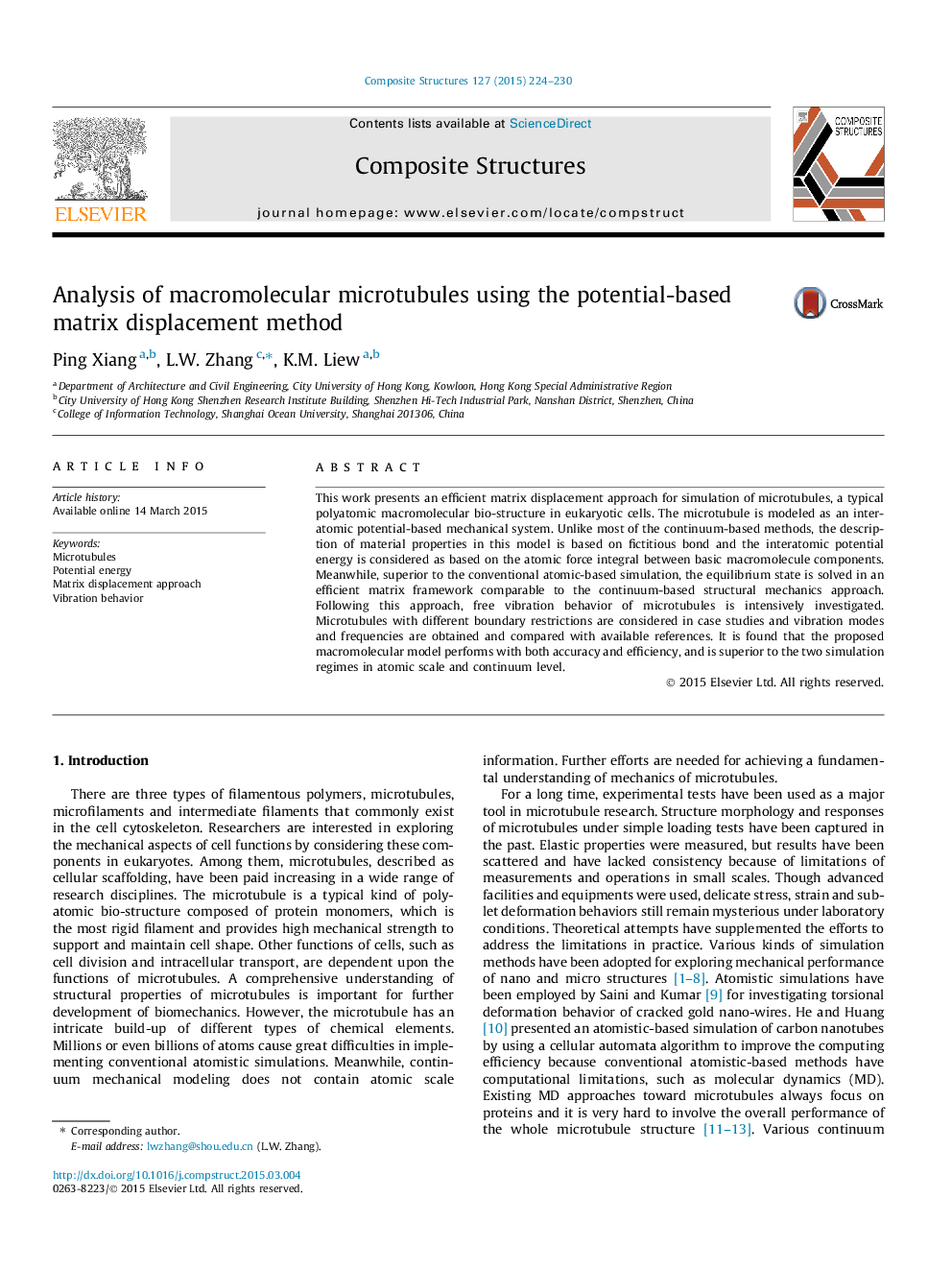| Article ID | Journal | Published Year | Pages | File Type |
|---|---|---|---|---|
| 251280 | Composite Structures | 2015 | 7 Pages |
This work presents an efficient matrix displacement approach for simulation of microtubules, a typical polyatomic macromolecular bio-structure in eukaryotic cells. The microtubule is modeled as an interatomic potential-based mechanical system. Unlike most of the continuum-based methods, the description of material properties in this model is based on fictitious bond and the interatomic potential energy is considered as based on the atomic force integral between basic macromolecule components. Meanwhile, superior to the conventional atomic-based simulation, the equilibrium state is solved in an efficient matrix framework comparable to the continuum-based structural mechanics approach. Following this approach, free vibration behavior of microtubules is intensively investigated. Microtubules with different boundary restrictions are considered in case studies and vibration modes and frequencies are obtained and compared with available references. It is found that the proposed macromolecular model performs with both accuracy and efficiency, and is superior to the two simulation regimes in atomic scale and continuum level.
